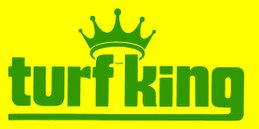Can anything be done in the middle of November? Sod may still be available so the lawn could be repaired. I would first suggest checking the lawn for grubs. These 2 lawns pictured don't look like grub problems. But, it is worthwhile checking. If there are grubs and you sod over them, the grubs aren't likely to do too much damage to the sod. Raccoons and skunks, however, may think, "hey these grubs are easy to find, and the grass was really easy to lift up!"
If you're not in the mood to sod right now, I would suggest waiting until spring to do any seeding. It is unlikely that grass seed will do too much at this time of year.
If it makes you feel better, you could purchase a small amount of grass seed and throw it over the bare spots. It may come up next spring and it may not. A little bit of grass seed is relatively inexpensive way to salve your conscience. The only problem is that by the time the ideal time to seed and repair comes around next spring, the grass seed you threw down now won't have come up so you will have to start from scratch.
So I guess the only reason to put some grass seed down now is if you are the type that only has a 50-50 chance of getting around to doing any repairs and seeding at the correct time next spring.





